Cilantro (Coriander leaves), also called as Kothmir or Hara Dhaniya in Urdu language, is my favorite, most quintessential culinary herb with a wonderful aroma, which I love to add in most of my vegetable and meat preperations while I cook. The leaves are rich in vitamin C, vitamin A, the B vitamin riboflavin and dietary fiber.
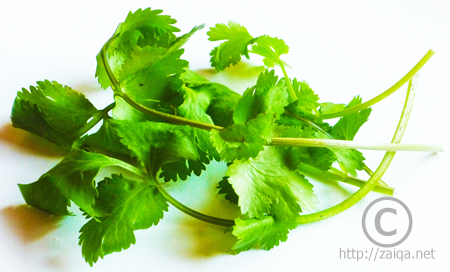
Cilantro or Kothmir
To plant and harvest:
Growing this fragrant herb is easy. Every Indian kitchen is stocked up with coriander seeds. Just sow a few of them into soil, water a little daily to keep the soil moist. They sprout in about 10 days time. I sowed a handful seeds in railing planters, as well as in a few used yogurt boxes (which I washed throughly, and made two holes in the bottom, before adding soil and sowing) and they grew beautifully.
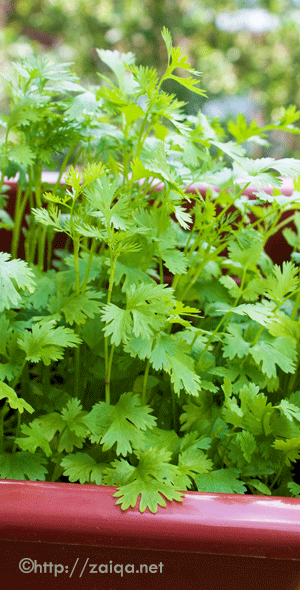
Cilantro growing in planter
Cilantro blooms are the most fragrant. If you pluck a few, the strong fragrance lasts in your fingers for a long time for everybody to notice.
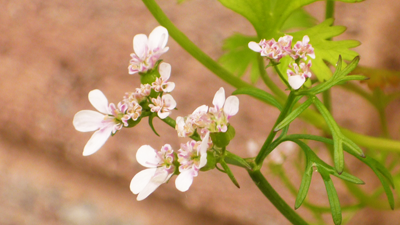
Cilantro Blooms
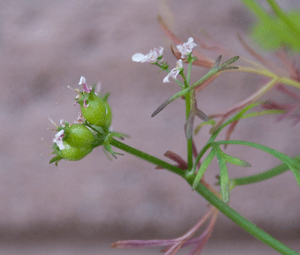
Cilantro Blooms developing into Coriander seeds
I sow a few coriander seeds, once every two months (optional: and fertilize them with manure), so that I have cilantro at hand whenever I need it. Place the pots outdoors in summers, and sow them indoors in pots in front of bright windows in winters. Make sure to harvest the Cilantro before it goes into the blooming stage.
To store Cilantro – I usually follow the subsequent ways to store fresh cilantro:
1. Discard the tough stem ends and spread out the tender (unwashed) cilantro over a paper towel as shown in the picture below.
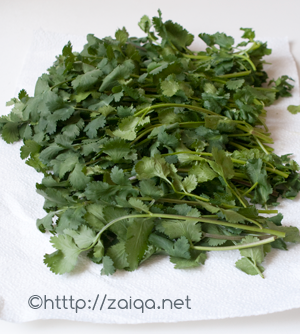
Gently roll the tender cilantro snugly in paper towel.

Transfer this roll to a zip-lock plastic bag, squeeze out air and store refrigerated. Before using, wash required amount thoroughly in water, pat dry and use as required. Use the roll within 2-3 weeks. Keep checking, if the paper towel has become damp or needs a change, replace it with a fresh paper towel for the cilantro to last longer.
2. Discard the tough stem ends and store the tender (unwashed) cilantro in a plastic box. Place two raw eggs in shell in the box and cover with a tight fitting lid.
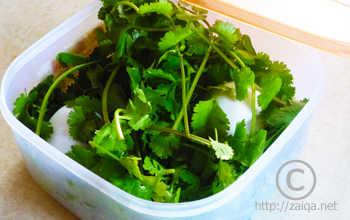
The egg absorbs the excess moisture and keeps the cilantro fresh for almost 2 or 3 weeks. Discard the egg after 3 weeks of use, and replace with new if required. Before using cilantro, wash required amount thoroughly in water, pat dry and use as needed.
3. An another way to store fresh cilantro is to freeze it, just like I do with fresh mint leaves. This way you can store fresh cilantro indefinitely.

Discard the tough ends of cilantro. Wash the bunch in a sink of fresh cool water. Swish it vigorously. Plunge it in and out. Remove from water and shake off excess water. Spread on a kitchen towel and let dry for 30 minutes. Now chop them all up roughly. In an ice-cube tray, tightly pack roughly chopped cilantro along with its tender stems into each of the molds of the tray. Cover with water and freeze overnight. The next day, working quickly, unmold the frozen cilantro cubes from the ice-cube tray and transfer them to a zip-lock bag. Squeeze out air and freeze immediately. To use, add the frozen cubes to the curries during the last stages of cooking.
Luv,
Mona